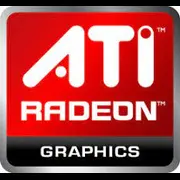ATI Radeon HD 5850

ATI Radeon HD 5850 in 2025: A Retrospective and Practical Tips
An Overview of the Legendary Graphics Card from the Perspective of a Modern User
Introduction: Why is the HD 5850 Still Interesting?
Released in 2009, the ATI Radeon HD 5850 became a symbol of the era when GPUs began to actively develop support for DirectX 11 and multi-monitor systems. Today, 16 years later, this card evokes nostalgia among enthusiasts and curiosity among those looking to build a retro PC. In this article, we will explore what the HD 5850 can surprise us with in 2025 and who can still benefit from it.
1. Architecture and Key Features
Architecture: The HD 5850 is built on the TeraScale 2 (RV870) microarchitecture. It was the first generation of AMD GPUs to fully support DirectX 11, which was a breakthrough in 2009.
Manufacturing Process: 40nm production technology (for comparison, modern cards use 4-5 nm). This ensured a good balance between performance and energy efficiency at the time of release.
Unique Features:
- Eyefinity — support for up to 3 monitors simultaneously (a revolution for multitasking and gaming).
- DirectX 11 — tessellation and improved shader modeling.
- No analogues for RTX/DLSS: The HD 5850 lacks ray tracing or upscaling technologies, which only emerged a decade later.
2. Memory: Modest but Progressive for Its Time
- Memory Type: GDDR5 (volume — 1 GB, bus width — 256 bits).
- Bandwidth: 128 GB/s (for comparison: the RTX 4060 has 272 GB/s).
- Impact on Performance: From 2009 to 2012, 1 GB was sufficient for gaming at 1080p, but today even indie games require at least 2-4 GB. In 2025, the HD 5850 will only be suitable for old games or 2D applications.
3. Gaming Performance: Nostalgia in Numbers
Examples of FPS in games from 2009-2012 (on high settings, 1080p):
- Crysis: 25-30 FPS.
- Battlefield: Bad Company 2: 35-40 FPS.
- The Elder Scrolls V: Skyrim: 30-35 FPS.
Modern Projects (2020+):
- CS2: 20-25 FPS on minimum settings.
- Fortnite: 15-20 FPS (without support for new graphics APIs).
- 4K? Impossible even for less demanding games.
Ray Tracing: Not supported — for this, GPUs with RDNA 2/3 or NVIDIA Ampere/Ada Lovelace architecture are required.
4. Professional Tasks: Moderate Potential
- Video Editing: In basic editors (such as Adobe Premiere Pro CS6), the HD 5850 can handle HD video rendering, but modern codecs (H.265, AV1) are not supported.
- 3D Modeling: Programs like Blender 2.7 use OpenCL, but rendering speed will be 10-15 times lower than that of modern budget cards.
- Scientific Calculations: OpenCL 1.1 support is limited — the card is unsuitable for machine learning or simulations.
5. Power Consumption and Heat Dissipation
- TDP: 151 W — more modest than the flagship models of 2025 (like the RTX 4070 — 200 W), but average for its time.
- Cooling: The standard cooler will work in a case with good ventilation. However, due to the card's age, it’s advisable to replace the thermal paste and check the fans for wear.
- Case Recommendations: At least 2 expansion slots, 1-2 intake fans.
6. Comparison with Competitors: Who Was Stronger in 2009?
- NVIDIA GeForce GTX 285: Approximately equal performance, but the HD 5850 has lower power consumption and supports DirectX 11.
- NVIDIA GeForce GTX 275: Cheaper, but weaker in tessellation tests.
- AMD Radeon HD 5870: Higher model on the same architecture — 10-15% faster, but more expensive.
In 2025: All these cards are artifacts. For comparison, even a budget NVIDIA GTX 1650 (2019) is 3-4 times more powerful than the HD 5850.
7. Practical Tips for Users in 2025
- Power Supply: At least 450 W with 6-pin and 8-pin connectors.
- Compatibility: PCIe 2.0 x16 — works in PCIe 3.0/4.0 slots, but with bandwidth limitations.
- Drivers: Official support was discontinued in 2015. The best option is Windows 7/8.1 or Linux with open-source drivers.
- Price: New units are not available. Used options range from $20-40 (collector's market).
8. Pros and Cons of the ATI Radeon HD 5850
Pros:
- Historical value for enthusiasts.
- Low price on the secondary market.
- Support for Eyefinity for multi-monitor configurations.
Cons:
- Does not support modern APIs (Vulkan, DirectX 12 Ultimate).
- Insufficient memory for 2025 tasks.
- Lack of energy-saving technologies (e.g., Zero Fan in idle).
9. Conclusion: Who is the HD 5850 Suitable For?
This graphics card isn't for gamers in 2025, but it will find an audience among:
1. Collectors and retro enthusiasts — for restoring a 2000s PC.
2. Old game lovers — to run Crysis or Mass Effect 2 in authentic conditions.
3. Experimenters — testing legacy systems and comparing technologies.
Epilogue: The HD 5850 as a Symbol of Evolution
The ATI Radeon HD 5850 reminds us of how far the industry has come in 16 years. Today, even smartphones outperform it in terms of capability, but without such cards, there would be no modern Radeon RX 8000 or GeForce RTX 50 series. This is not just hardware — it's part of history.
Basic
Memory Specifications
Theoretical Performance
Miscellaneous
Benchmarks
Compared to Other GPU
Share in social media
Or Link To Us
<a href="https://cputronic.com/en/gpu/ati-radeon-hd-5850" target="_blank">ATI Radeon HD 5850</a>